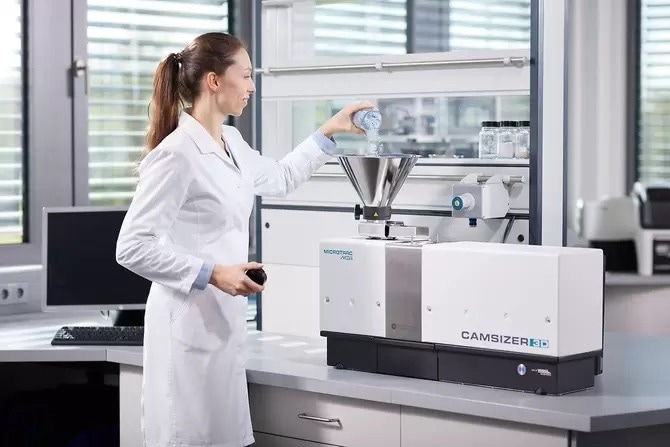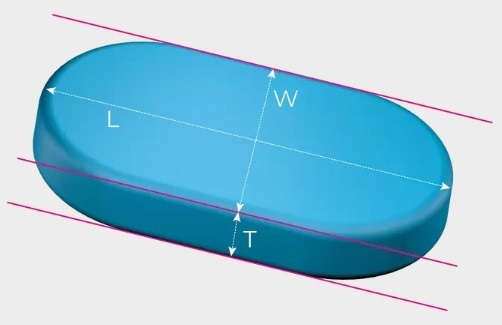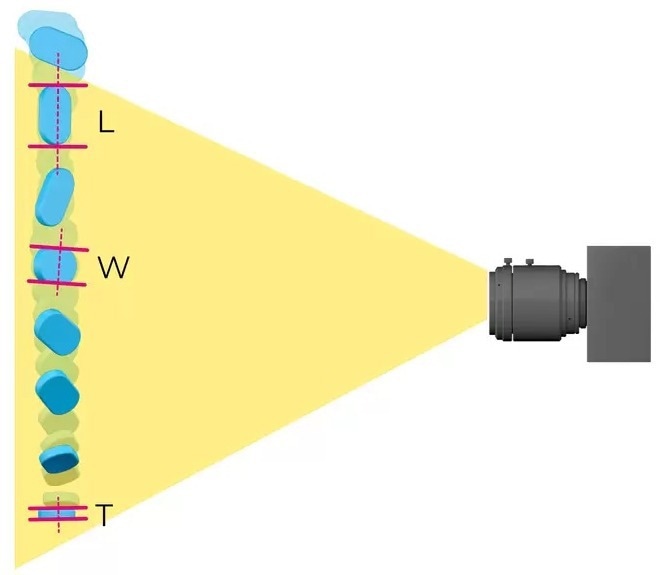The CAMSIZER 3D particle analyzer is setting new benchmarks in the characterization of bulk solids by combining all the benefits of dynamic image analysis (ISO 13322-2) in a redesigned measuring system.
Exceptional 3D Analysis: The large field of view and long drop distance allow for up to 30 analyses of each particle in various orientations, enabling analysis of the true three-dimensional particle morphology. Additionally, examination of the “3D tracks” greatly improves the informative value of shape analysis.
Proven 2-Camera System: The CAMSIZER 3D’s new ZOOM camera (9 MPx) enables highly accurate evaluation of small particles. Together with the BASIC camera (5 Mpx), this ensures a broad measurement range from 20 µm to 30 mm. For the examination of dry, freely flowing bulk solids in both quality control and research applications, CAMSIZER 3D is the preferred tool.

Image Credit: Microtrac MRB
The Most Powerful Dynamic Image Analysis
- Patented 3D analysis with “Particle Tracking”
- Up to 30 images of every particle
- Evaluation of >250 images/seconds in real-time (in 3D mode)
- Outstanding reproducibility
- Particle size and shape analysis from 20 µm to 30 mm without hardware adjustment
- Short measuring time of 2 to 5 minutes
- Excellent compatibility to sieve analysis
- High sample throughput
- 100% detection of oversize particles

Image Credit: Microtrac MRB
Patented 3D Particle Tracking Technology
The CAMSIZER 3D utilizes a funnel, vibrating feed chute, LED strobe backlighting, powerful high-speed cameras, and sophisticated software to perform the measurements.
The particles travel down the vibrating feeder and fall into the sensing zone, creating a tumbling motion as they fall. The CAMSIZER software tracks each particle as it passes between light source and cameras, taking up to 250 images per second.
Multiple images are captured as the particle is tracked, measuring the particle’s length, width, thickness, perimeter, area, and various shape descriptors.
The software automatically aligns up to 30 images for viewing. As a result, a “particle track” — a collection of images of the same particle taken at various angles — is generated.
Particle analyzer Camsizer 3D Function principle - Microtrac MRB
Video Credit: Microtrac MRB
Based on one or more size or shape parameters, distributions can be calculated from this. For more targeted investigation, filters can be used to separate groups of particles of particular interest.
The software calculates the width and length of each particle projection in the particle track:
- The “3D length” of the particle has the highest value of all length measurements inside a particle track
- The “3D width” of the particle has the highest value of all width measures inside a particle track
- The “3D thickness” of the particle has the least value out of all width measurements inside a particle track
Thus, for particles with three different dimensions, such as almonds, the size distributions of all three dimensions can be output separately. For particles with a predetermined shape, such as spheres, rods (extrudates), lenses, or ellipsoids (the shape of a rugby ball), 3D analysis is extremely helpful.
With the 3D tracking technology, each particle inevitably shows a wide variety of projections, which automatically opens up new possibilities in shape analysis.

Image Credit: Microtrac MRB
New Possibilities in Shape Analysis
Traditional 2D analysis, in comparison, simply records one image per particle in a random orientation; no “mapping” of one image to another occurs even if the particle is measured numerous times at a higher acquisition rate. Every single image is handled as a brand-new measurement event. This obscures the real length, width, thickness, and shape.
The “length” measured in 2D mode is rather a mixture between true 3D length and true 3D width; the “width” measured in 2D mode is a mixture between true 3D width and true 3D thickness. Meaningful results can only be obtained in 2D mode if if the particles can be mechanically aligned. In the past, however, this was only feasible for some special particle shapes like cylinders.

Image Credit: Microtrac MRB
Measurements in 2D Mode
- Suitable for irregularly shaped material, natural products
- Results compatible with sieve analysis
- Particle size and shape measurement in random orientation
Measurements in 3D Mode
- Excellent detection of defective particles
- More accurate volume calculation
- Separate distribution of length, width, and thickness